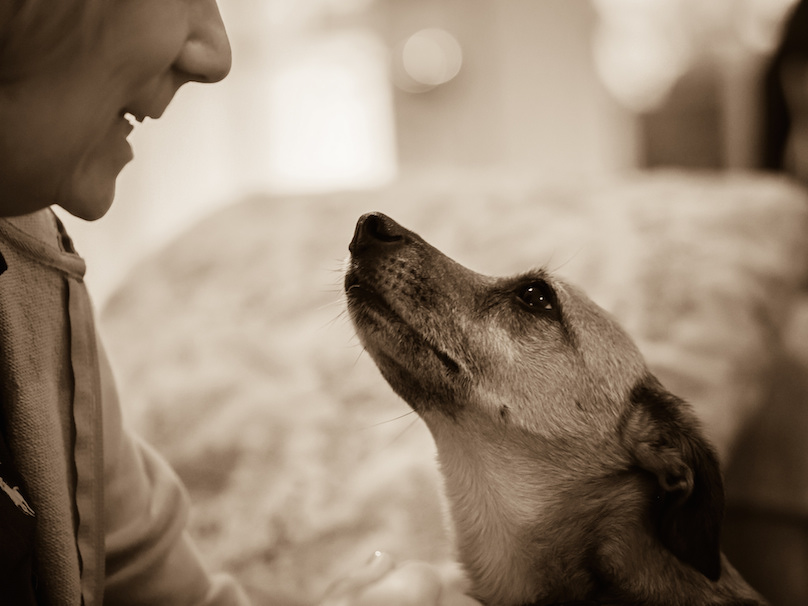Our dogs, I’m sure, think that we talk too much and say too little. My advice to dog owners: when you cannot improve on silence, be quiet.
The function of communication is to achieve or maintain any desired outcome. Communication—information, instruction, persuasion, control, motivation, emotional release, and information—is all about change. If we don’t want anything in particular, the best we can do is to keep silent.
Communication happens through signals with different forms, e.g., sound (verbal and non-verbal), body language, facial expression, eye contact, smell, touch. All organisms communicate, animals, plants, fungi, and even bacteria.
Talking is our primary communication means because we have developed complex language systems. That is a peculiarity of the brain of our species. Other animals also communicate with one another, though their communication is supposedly not as sophisticated as ours. Besides talking to change or maintain the behavior of others, we also engage in cozy talk, social talk, gossiping, etc.. However, cozy talk is not always that cozy, and social conversation leans more often than we care to admit to being anti-social.
If language is a useful tool to create understanding, it is also the ideal tool to create misunderstanding. In conclusion, we would be better off shutting up more often. Therefore, when you cannot improve on silence, be quiet.
Dogs don’t care for idle talk or social talk. They don’t have a keen interest in gossip or emotional bursts either. Dogs are pragmatic—if you don’t bother me and I don’t bother you, all is good. Dogs are connoisseurs of silence. Instead of so much talking, I believe your dog would value immensely more a loving glance or a little pacifying gesture. In other words: if you don’t have anything important to say to your dog, keep silent.
Have a quiet, peaceful and beautiful day!
Learn more in our course Ethology and Behaviorism. Based on Roger Abrantes’ book “Animal Training My Way—The Merging of Ethology and Behaviorism,” this online course explains and teaches you how to create a stable and balanced relationship with any animal. It analyses the way we interact with our animals, combines the best of ethology and behaviorism and comes up with an innovative, yet simple and efficient approach to animal training. A state-of-the-art online course in four lessons including videos, a beautiful flip-pages book, and quizzes.

